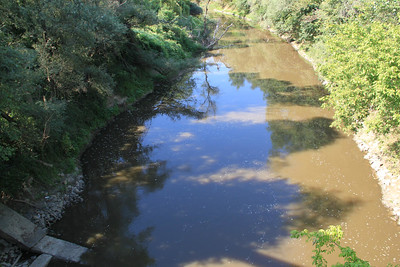On the 22nd of August, the 32nd virtual SuSanA (Sustainable Sanitation Alliance) meeting explored the role of productive sanitation systems and hygiene in enhancing the sustainability, circularity, resilience, and surveillance of urban and rural areas. Inadequately managed sanitation systems can negatively impact food production and, in turn, humans because of disease transmission. The uncontrolled release of faecal sludge and wastewater into the environment can also contaminate it with polluting substances. Notwithstanding, productive sanitation systems embrace the ability to sustainably catalyse agricultural systems through resource recovery practices.
“Most people have flush toilets, the water goes somewhere, often without treatment” Björn Vinnerås, Professor in Cycle Engineering and leader of the group in cycle Engineering at SLU.
Water, a vital element in food security
Water insecurity can be directly associated with food insecurity. Agriculture represents 70% of global freshwater withdrawals and a person’s daily food intake requires between 2,000 and 5,000 litres of water. Water is indispensable in agricultural production, where crops cannot grow, and livestock cannot thrive if lacking. In this sense, it is vital to ensure access to clean water, and proper sanitation to prevent waterborne diseases, as well as the spread of diseases and water pollution to the environment. The most common example is human excreta, which are sent out of the city through water channels which pollute water bodies and contaminate the environment, highlighted Björn Vinnerås. The current water treatment system does not accurately monitor the flow of the water and relies on diluting. Thus, it can jeopardise human health if this polluted water is utilised to grow food. What are the opportunities to quell water pollution and close the loop?
Developing productive sanitation systems to enhance circularity
“We need to also look into how we can move forward and actually produce something that the farmers would like to have.” Bjorn Vinnerås.
While human excreta are generally perceived as contaminants, they are resources if carefully processed. It is the equivalent of 10 to 15 kilograms of chemical fertilisers in the excreta per person per year. This can be further utilised and turned into 100 kilograms of grains, explained Linus Dagerskog, Research Fellow at SEI and PhD Candidate at SRC. This presents the opportunity for human excreta to replace approximately 25% of artificial fertilisers used in agriculture, emphasised Björn Vinnerås.
Human excreta and wastewater hold the capacity to sustainably benefit food production by improving soil fertility, especially through ecological sanitation practices. The objective is to create products locally from these resources relevant to food production so that it returns to earth while enriching the soil. These bring multiple returns: upgrading the resilience of food systems, diminishing the transmission of diseases, and reducing the spread of micropollutants and eutrophication, underpinned Björn Vinnerås.
Whenever possible, it is important to use raw human excreta with, for instance, dehydration and decomposition processes and keep it away from water to restore the natural cycling of life-building materials while avoiding water pollution. In this light, placing the focus on waste treatment to upcycle the resources, so that it does not reach water, will trigger fewer needs in water treatment as the quality of faecal sludge and wastewater will not be degraded by excreta. To do so, it is imperative to adopt a systemic approach by looking at the full sanitation value chain to maximise waste treatment, build a circular process, and ensure safety, stressed Björn Vinnerås.
The potential of reusing human excreta and wastewater requires different strategies according to the context. In rural areas where knowledge can be lacking, it is prominent to implement measures that raise awareness of potential human faeces upcycling solutions. These methods must be affordable and acceptable to farmers, pointed out Linus Dagerskog. In urban areas, the focus needs to be placed on technologies, business models, policies/ legal frameworks, and acceptance by food producers and consumers. These improvement proposals require multi-sectorial collaboration, paradigm shift, and technical systems and institutions, mentioned Linus Dagerskog.
Concrete examples of resource recovery sanitation systems
In Malawi, developing sustainable and ecological sanitation toilets is challenging on account of social norms/taboos, poverty level, and lack of expertise. Hence, Mzuzu University supports an ongoing project to implement ecological sanitation technologies that satisfy rural areas’ needs and empower rural communities. Ten masons are trained to upscale ecological sanitation technologies to further build resource recovery tools and disseminate the knowledge, pinpointed Dr. Russel Chidya, Lecturer at Mzuzu University.
In Asia and Africa, CGIAR and IWMI work on producing mixed organic fertiliser out of municipal solid waste and faecal sludge co-composting, declared Pay Drechsel, Senior Fellow/Advisor at IWMI. To foster implementation, these organisations supported public-private partnerships in Ghana and developed several co-composting plants. Nevertheless, projects must be context-specific and positive outcomes may take time to emerge because of the long decomposing process to form compost, warned Pay Drechsel.
Finally, integrated strategies are crucial to leverage synergies between sanitation, solid waste and water supply since they are inherently connected, underscored Abishek Sankara Narayan, Post-Doctoral Researcher at Eawag. Resource recovery sanitation systems will alleviate the use of non-renewable resources such as water and chemicals and lessen physical, microbial, and chemical risks. To move forward, these technologies must expand at a large scale to be meaningful, especially for agriculture, raised Björn Vinnerås.
Reusing nutrients in human excreta and wastewater presents a high potential for food production, counteracts the direct pollution of water and ecosystems, bolsters the circular process by returning nutrients to soil and plants, and scales down the need for chemical fertiliser. The more locally this process takes place, the greater the efficiency. The advantage of this practice is that the resource will always be available locally. Expanding the use of organic resources as fertiliser will contribute to shifting from intensive and industrial agricultural systems to more resilient and sustainable food production.
Written by David Mingasson, SIANI reporter.
